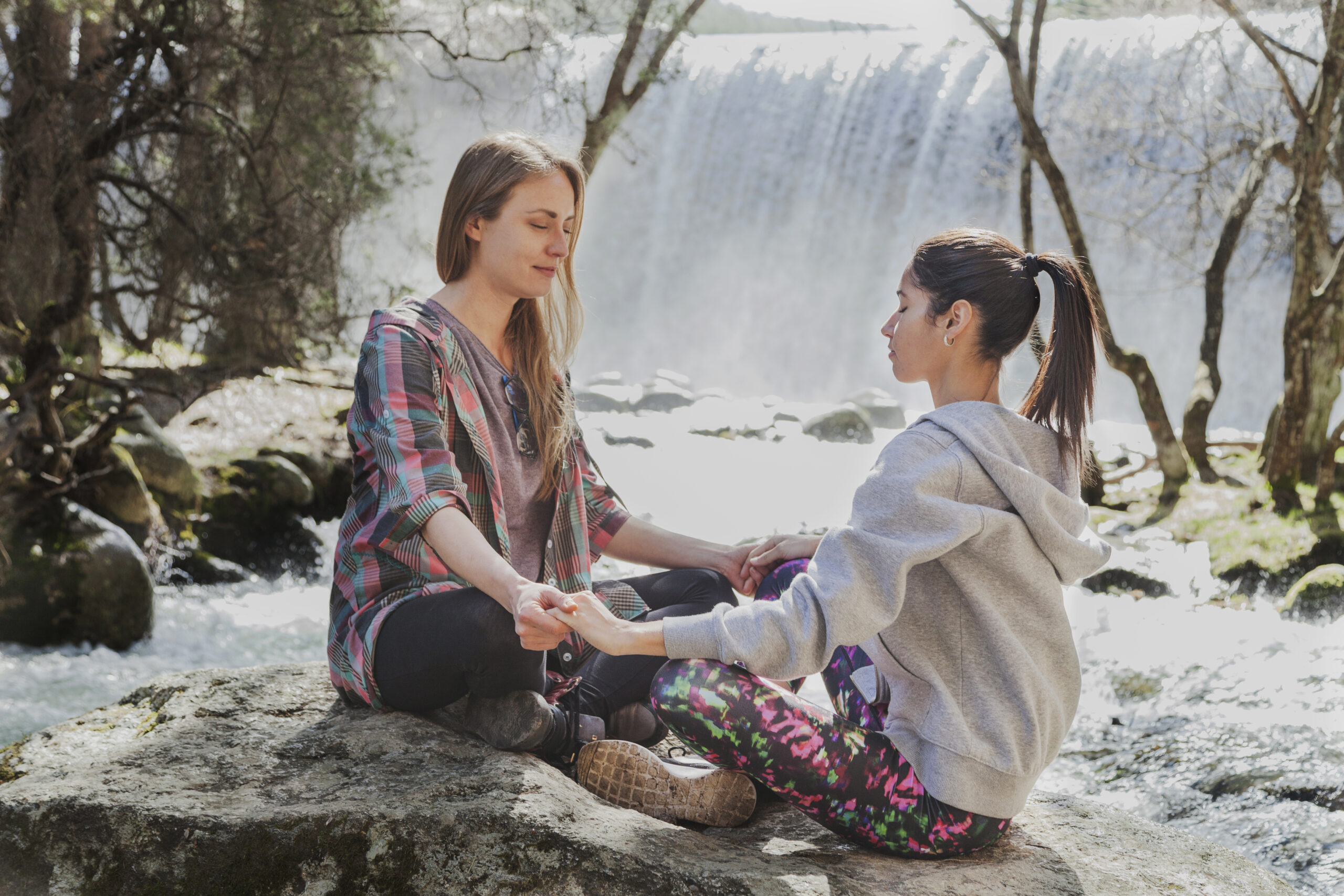There is something about silence in the forest that feels like a conversation. It speaks quietly, but deeply. For many women, wilderness therapy isn’t simply a retreat; it’s a return. A return to balance, to strength, to self. Unlike traditional counseling rooms, the outdoors opens a different kind of door. It removes walls, both physical and emotional.
Studies show that spending at least 120 minutes per week in natural spaces can significantly improve mental well-being. The wind, the sound of water, even the uneven trail—each element works differently on the human mind. Women in wilderness programs report not only reduced stress but also a clearer sense of identity and control. The outdoors, unpredictable and raw, mirrors the complexity of personal healing.

The Power of the Physical Journey
Walking uphill changes more than just breathing rhythm. It transforms inner dialogue. Many therapists say that the physical effort of hiking is tied to psychological breakthroughs. When muscles ache, the mind often releases what it’s been holding. For women who’ve faced trauma, burnout, or deep fatigue, the structure of nature offers something structured yet wild—a paradox that works.
Wilderness therapy combines psychological guidance with outdoor activities such as hiking, camping, or kayaking. Sessions may include reflective writing, mindfulness exercises, or team problem-solving tasks in open air. The idea is simple: when the body and environment align, healing accelerates.
And in this era, even reaching the wilderness begins virtually. Before stepping into a real mountain path, many women join online orientation sessions or virtual tours to understand what to expect from wilderness therapy programs. Video calls make remote support possible. However, privacy matters too. When joining group calls or accessing outdoor therapy portals, using secure connections is advised—sometimes even downloading VPN apps for PC or iOS are recommended to keep personal data safe during registration or communication. The easiest way to stay safe online is to use VPN apps from a trusted developer like VeePN – all the time.
Stories That Grow Like Roots
Every woman’s story begins differently. One may arrive from a corporate office, another from years of anxiety, another from silence that lasted too long. In the wilderness, titles fade. What remains is the act of survival—simple, pure, grounding. Making fire. Setting up camp. Sharing food cooked over an open flame. Each act is symbolic, almost ritualistic.
Therapists often observe that emotional breakthroughs happen not during talking circles but during motion—crossing a river, tying a rope, or climbing a slope. When the body moves forward, the mind follows. The terrain becomes a metaphor. The hill stands for challenge. The river for fear. The summit for renewal.
There’s also a community. Women who share these experiences often build a network that continues long after the program ends. The wilderness becomes their meeting point, real or remembered.
From Isolation to Connection
Modern life isolates in subtle ways. Notifications replace voices, schedules replace spontaneity. For women juggling multiple roles—mother, professional, caregiver—the idea of disconnecting feels like rebellion. Yet wilderness therapy invites precisely that. It demands being offline, being still.
Before setting out, most programs organize virtual group introductions. Participants meet their guides and peers via video calls, preparing mentally for the journey ahead. This virtual stage—interestingly—helps many overcome initial anxiety. It bridges two worlds: the digital and the natural.
The rise of video calls in preparatory stages has transformed accessibility. Women from urban areas or remote regions can now join orientation sessions without traveling. They learn about safety, gear, and group dynamics beforehand. Once they step into the real wilderness, they already carry a sense of belonging. Technology, once a barrier, becomes an entry point into transformation.
Still, therapists caution about digital boundaries. Data privacy, especially when sharing personal trauma online, remains crucial. That’s where secure networks—like VPN connections—play a role. They protect what’s personal, allowing women to focus on emotional openness without digital exposure.
The Quiet Science of Healing Outdoors
Why does the wilderness heal differently? The answer lies in biophilia, a human instinct to connect with natural life. Our brains respond to patterns in nature—light, color, rhythm—in ways that modern environments rarely trigger.
Research shows that time spent outdoors lowers cortisol levels, improves immune function, and enhances creativity. For women, especially those recovering from stress-related conditions, these effects are amplified. Nature offers nonjudgmental feedback. It doesn’t interrupt. It listens.
Some programs integrate reflective solitude—hours or even days spent alone in safe, supervised environments. Others emphasize group cooperation and trust. Both methods rely on the same foundation: exposure to uncertainty within safety.
When a woman lights a fire after several failed attempts, something fundamental shifts. Confidence grows not from success itself, but from persistence witnessed by nature.
Beyond the Trees: What Comes Next
Healing doesn’t end when the tent is packed away. The return home often reveals the real transformation. Participants report better emotional regulation, stronger interpersonal communication, and renewed clarity about personal goals.
Some even continue the connection through virtual follow-up meetings. Here again, video calls sustain the emotional continuity of the group. Technology, paradoxically, becomes the bridge back into everyday life.
The success of wilderness therapy among women also opens broader questions about how society defines wellness. Must healing always happen indoors? Can technology coexist with nature without replacing it? The answers, as always, are found between steps, between breaths.
A Closing Thought
Wilderness therapy teaches women to see chaos not as threat but as rhythm. Nature has no straight lines, no perfect silence, no predictable endings. And that’s the point. Healing is not linear—it’s seasonal.
From virtual tours and online sessions to mountain trails and campfires, the process spans both worlds. The screen prepares; the forest transforms. Whether guided by a therapist or by the rhythm of one’s own heartbeat, the wilderness remains an open space for rediscovery.
And sometimes, all it takes to begin that journey is a small click—a login to a virtual meeting, a moment of courage, a choice to step outside. The rest, as nature shows, unfolds naturally.




